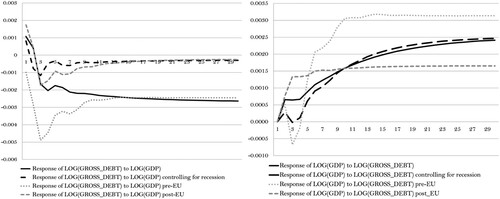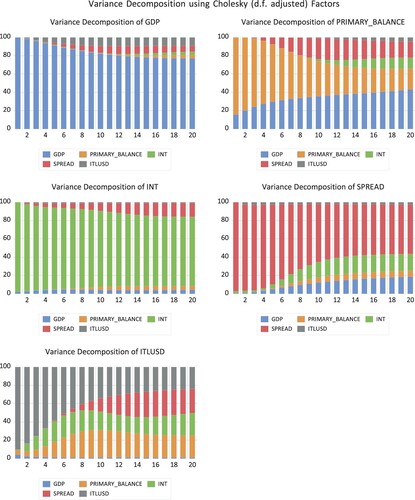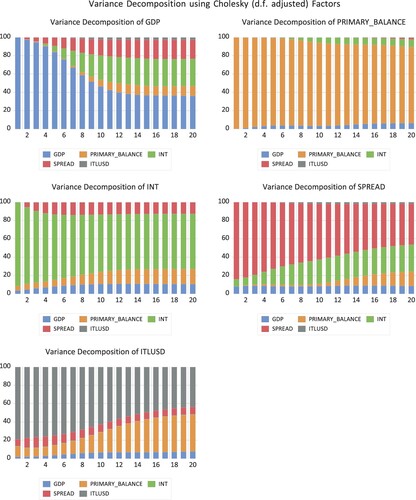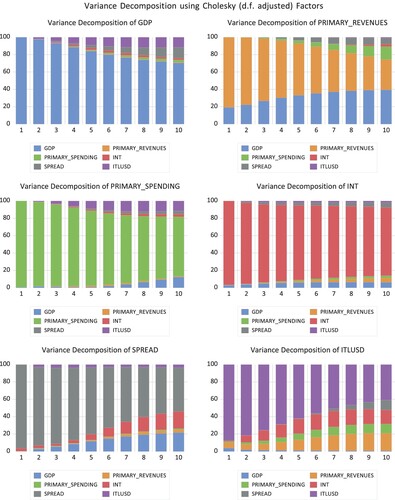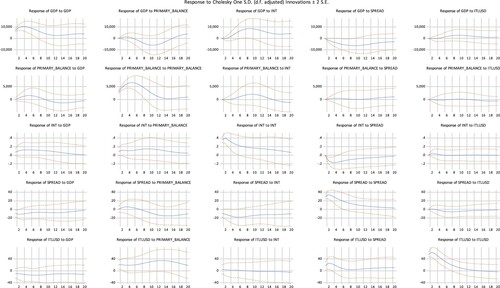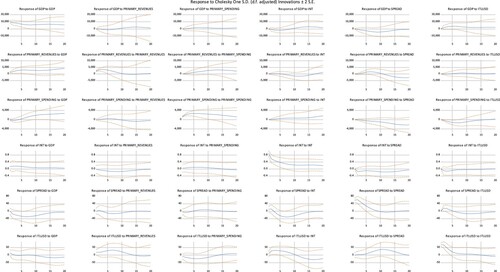Figures & data
Figure 1. Total fixed investment, net exports, and consumption as a percentage of GDP (1950–2018). Source: IMF (Citation2019), ISTAT (Citation2019).
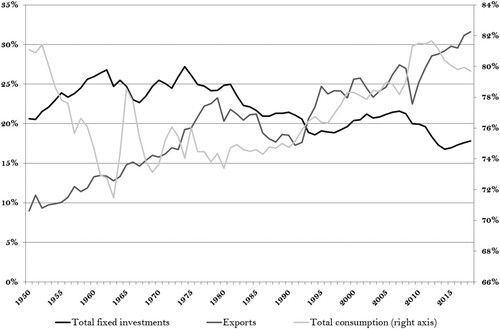
Table 1. GDP and GDP per capita 2017 in Italy (current prices, million euros).
Table 2. Nexuses between variables (output, fiscal balance, government debt, interest rate, spread, and exchange rate).
Figure 2. Real interest rate, GDP growth, primary balance as a percentage of GDP, interest payments as a percentage of GDP, and gross debt as a percentage of GDP (1980–2018) in Italy. Source: IMF (Citation2019), ISTAT (Citation2019).
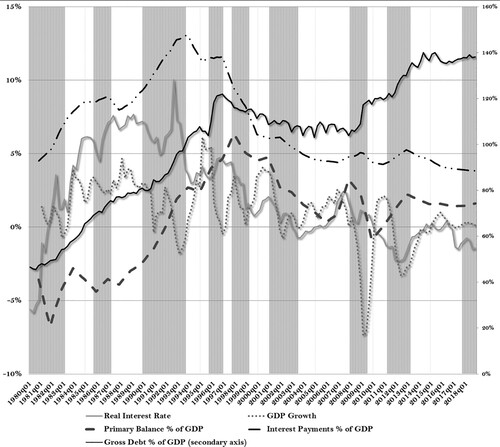
Figure 3. Evolution of the sustainability of Italian public debt following Sylos Labini (first criterion on the left graph, second criterion on the right graph) (1982–2018 — cumulative values). Source: IMF (Citation2019), ISTAT (Citation2019).

Figure 5. Government, private-sector, and foreign net borrowing as a percentage of GDP (1991–2018) in Italy. Source: ISTAT (Citation2019).
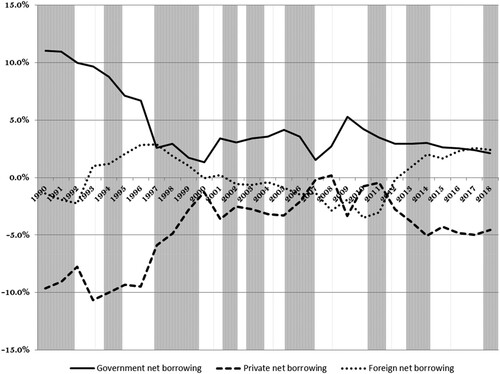
Figure 6. Countercyclical fiscal policy in Italy: debt-to-GDP ratio and primary deficit as a percentage of GDP (1981–2018). Source: ISTAT (Citation2019).
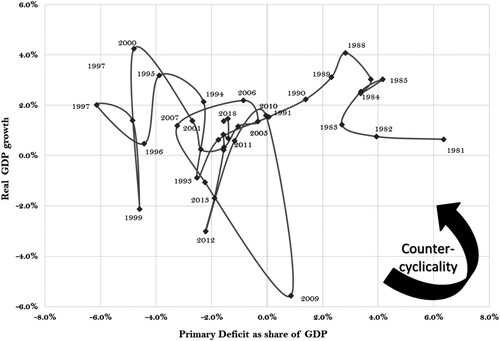
Figure 9 .#Primary revenues and spending of the Italian government as a share of GDP (1980–2018). Source: ISTAT (Citation2019).
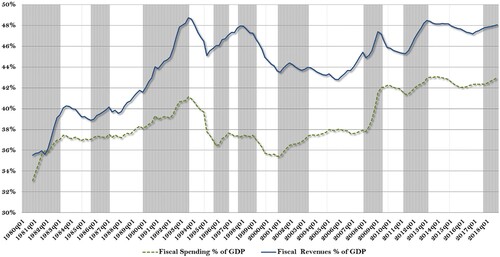
Table A. Johansen Test Model 1.
Table B. VAR Granger causality/block exogeneity Wald tests Model 1.
Table C. Vector error correction estimates Model 1.
Table D. Selection criteria Model 2.
Table E. Selection criteria Model 3.

